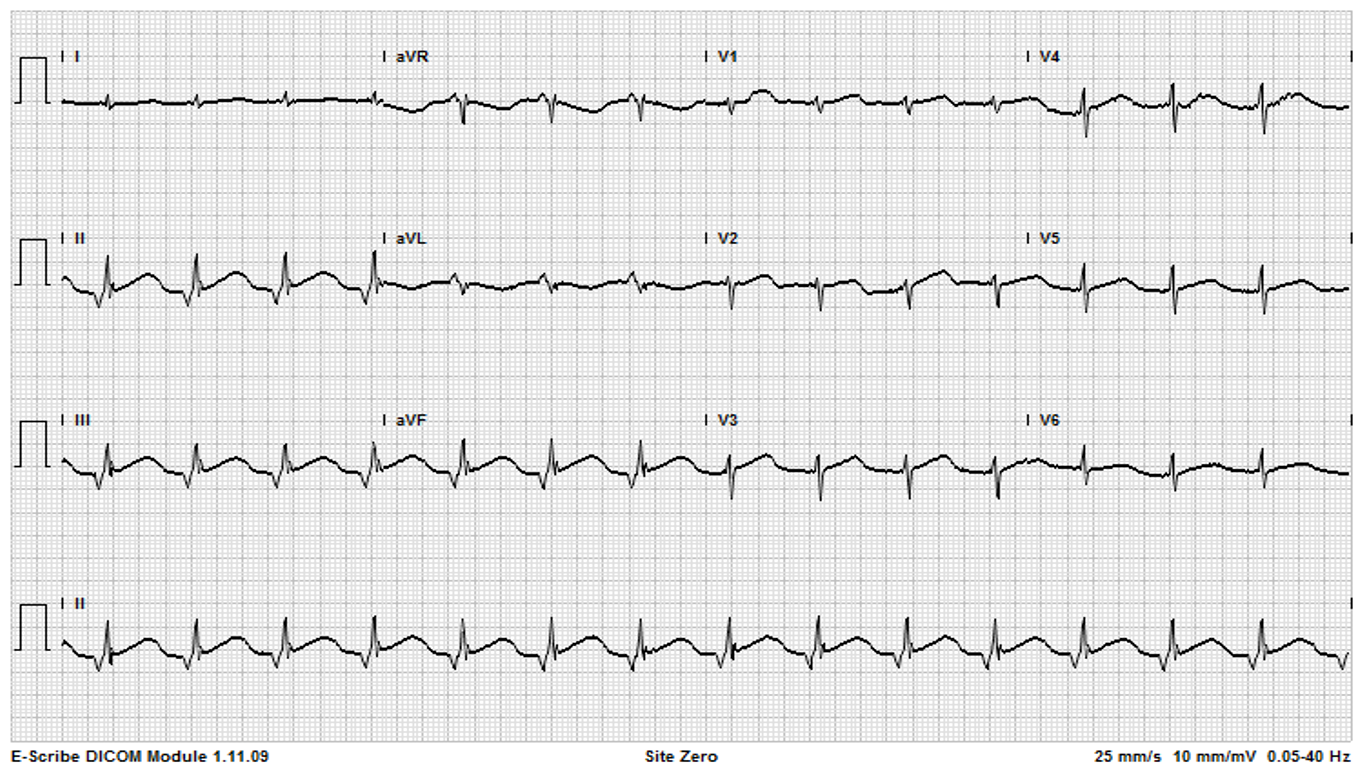[1]
Zhou X,Bueno-Orovio A,Schilling RJ,Kirkby C,Denning C,Rajamohan D,Burrage K,Tinker A,Rodriguez B,Harmer SC, Investigating the Complex Arrhythmic Phenotype Caused by the Gain-of-Function Mutation KCNQ1-G229D. Frontiers in physiology. 2019;
[PubMed PMID: 30967788]
[2]
Dehghani-Samani A,Madreseh-Ghahfarokhi S,Dehghani-Samani A, Mutations of Voltage-Gated Ionic Channels and Risk of Severe Cardiac Arrhythmias. Acta Cardiologica Sinica. 2019 Mar;
[PubMed PMID: 30930557]
[3]
Alahmadi A,Davies A,Vigo M,Jay C, Can laypeople identify a drug-induced QT interval prolongation? A psychophysical and eye-tracking experiment examining the ability of nonexperts to interpret an ECG. Journal of the American Medical Informatics Association : JAMIA. 2019 May 1;
[PubMed PMID: 30848818]
[4]
Giudicessi JR,Roden DM,Wilde AAM,Ackerman MJ, Classification and Reporting of Potentially Proarrhythmic Common Genetic Variation in Long QT Syndrome Genetic Testing. Circulation. 2018 Feb 6;
[PubMed PMID: 29431662]
[5]
Beach SR,Celano CM,Sugrue AM,Adams C,Ackerman MJ,Noseworthy PA,Huffman JC, QT Prolongation, Torsades de Pointes, and Psychotropic Medications: A 5-Year Update. Psychosomatics. 2018 Mar - Apr;
[PubMed PMID: 29275963]
[7]
Ebrahim MA,Williams MR,Shepard S,Perry JC, Genotype Positive Long QT Syndrome in Patients With Coexisting Congenital Heart Disease. The American journal of cardiology. 2017 Jul 15;
[PubMed PMID: 28532774]
[8]
Uvelin A,Pejaković J,Mijatović V, Acquired prolongation of QT interval as a risk factor for torsade de pointes ventricular tachycardia: a narrative review for the anesthesiologist and intensivist. Journal of anesthesia. 2017 Jun;
[PubMed PMID: 28229241]
Level 3 (low-level) evidence
[9]
Hutton DM, The importance of routine QT interval measurement in rhythm interpretation. Dynamics (Pembroke, Ont.). 2008 Fall;
[PubMed PMID: 18773713]
[10]
Cavero I,Crumb W, The use of electrocardiograms in clinical trials: a public discussion of the proposed ICH E14 regulatory guidance. April 11-12, 2005, Bethesda, MD, USA. Expert opinion on drug safety. 2005 Jul;
[PubMed PMID: 16011455]
Level 3 (low-level) evidence
[11]
Anderson HN,Bos JM,Haugaa KH,Morlan BW,Tarrell RF,Caraballo PJ,Ackerman MJ, Prevalence and Outcome of High-Risk QT Prolongation Recorded in the Emergency Department from an Institution-Wide QT Alert System. The Journal of emergency medicine. 2018 Jan;
[PubMed PMID: 29107482]
[12]
Gromova OA,Torshin IY,Kalacheva AG,Grishina TR, [On Synergism of Potassium and Magnesium in Maintenance of Myocardial Function]. Kardiologiia. 2016 Mar;
[PubMed PMID: 28294893]
[13]
Chouchoulis K,Chiladakis J,Koutsogiannis N,Davlouros P,Kaza M,Alexopoulos D, Impact of QT interval prolongation following antiarrhythmic drug therapy on left ventricular function. Future cardiology. 2017 Jan;
[PubMed PMID: 27990843]

